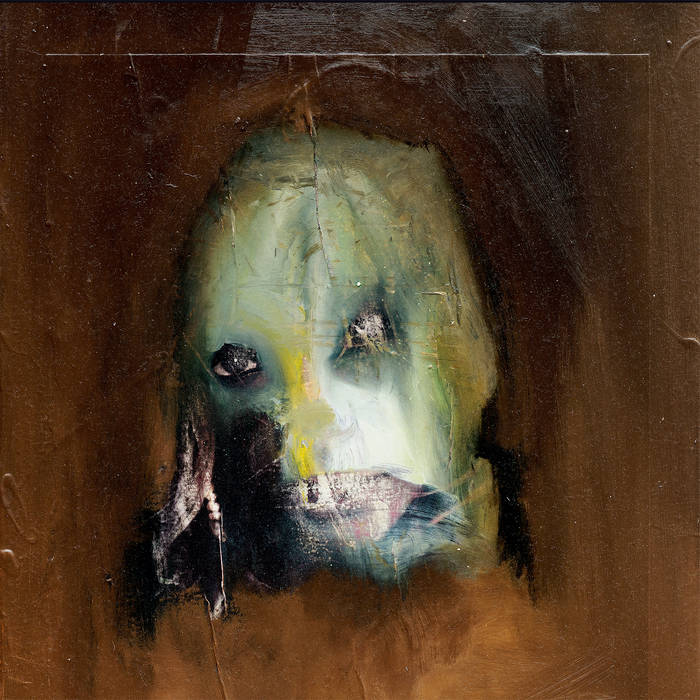A few months ago, I was at a music festival with the founders of this website. As we sat resting late in the evening, I brought up a set I enjoyed. The reply: "I used to quite like them, but now it’s just gothic sound design." That stuck with me, like a ringing in the ears. The term "sound design" metamorphosed, however gradually, into something of a red flag, especially when used as a record’s primary descriptor. As in: "It’s a masterpiece of sound design." God forbid you call something a "sound design record". That’s basically pejorative – shorthand for staid, vaguely goth atmospherics utterly devoid of dynamism. Accidental ambient music. And so, the pre-release chatter surrounding sound artist Marc Richter’s latest LP as Black To Comm, Seven Horses For Seven Kings, while all positive, raised some flags. Maybe not red, but amber. Anyway, I approached the album with caution, but it turns out my knee-jerk scepticism was entirely unwarranted. Seven Horses For Seven Kings is a bracing, deeply unsettling listen, incapable of devolving into aural wallpaper.
The record is also frequently terrifying, building and releasing tension in the same way a well put together horror narrative might – something that scores of LPs have attempted in recent years, but few successfully pull off. And like all the best horror stories, Richter’s work possesses a dark sense of humour. It bubbles up from time to time, relieving tension, allowing the listener to breathe, to recalibrate, before disembodied voices or piercing tones or fleshy burbles ratchet up the tension once again. In fact, the album’s first moments are sublimely silly. Opener ‘Asphodel Mansions’ kicks off with a rotten fanfare, brass suggestive of an absurd, foolish king lording over a wretched, worthless kingdom. That is, until the horns mingle with chanting (or what’s meant to sound like it), and the tone of the album shifts entirely. Is what we’re hearing now wind or screeching animals? Shrieking people? The brass returns, but now it feels foreboding, accompanied by the stench of an animal breathing in your ears.
It’s all very intense. But is it entertaining? I’d say it is, very much so, but it all depends on how you like to be entertained. Of course, people have been freaking themselves out with sound effects and sound design since at least the 1920s. First with radio plays, then by the 50s, with narrative recordings pressed to vinyl, which were popular through at least the 70s. It’s possible that Disneyland Records released the first side of scary sound effects tracks divorced from voiceover in 1964 with Chilling, Thrilling Sounds Of The Haunted House. Side A featured typical stories accompanied by sound effects, but side B was entirely "instrumental", and honestly, it holds up. The BBC Radiophonic Workshop got in on the act in 1977, when they released their fairly nightmarish Sound Effects No. 13 – Death & Horror. Which is all to say that Black To Comm exists, however tangentially, within a long tradition of horrifying recordings purpose-built for the construction of narrative, whether tacked on in production or crafted in the mind of the listener. It’s here that Richter reveals a great generosity of spirit, providing cues through titles like ‘A Miracle No-Mother Child At Your Breast’ or ‘The Courtesan Jigokudayū Sees Herself As A Skeleton In The Mirror of Hell’, which give the listener a sense of scene, putting the music into something that almost resembles context.
I use the word "music" very purposefully when referencing Black To Comm, because the undeniable musicality of the tracks Richter makes is the key distinction between his work and the records referenced above. These pieces aren’t just beautifully mixed assemblages of sound or noise, but carefully measured and thrilling compositions that build and climax in ways that any fan of post-rock or electronic music will immediately connect with. It’s another way Richter’s generosity shines through. This record may be uncompromising, at times purposefully alienating, but it’s also wildly listenable thanks to points of ingress – like the incredible percussion of ‘Fly On You’ or the heartbreaking ambience of ‘Angel Investor’ – scattered throughout its thirteen tracks that are as welcoming as the more extreme moments are repulsive. It’s an impressive balancing act evident of an artist in complete command of his medium. So, when I say that Seven Horses For Seven Kings is a masterpiece of sound design, that’s no backhanded compliment. This album is the sort of sound design record that more sound artists should aspire to make.


